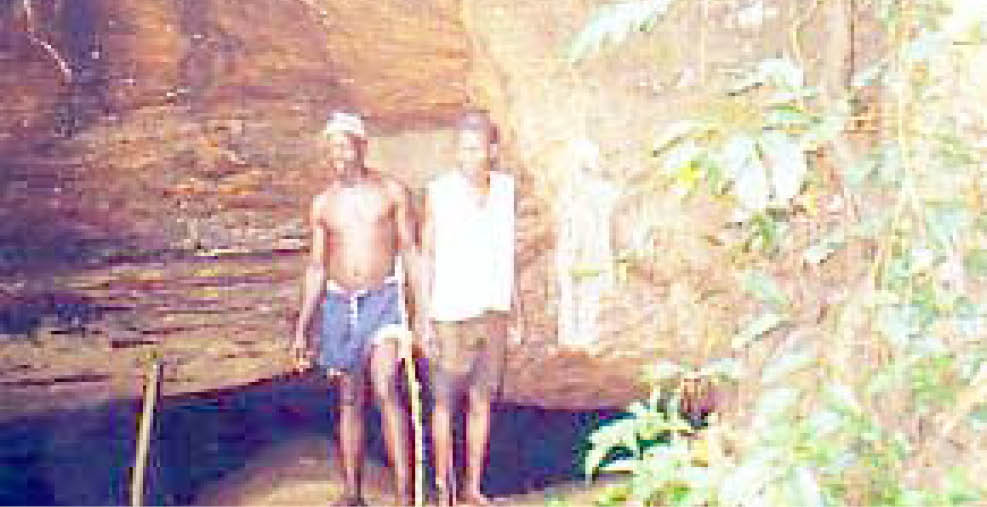Arochukwu, apart from being the place of birth of some influential Nigerians, also boasts of several historical tourist sites, most notably the Ibinu Ukpabi shrine or the Long Juju as called by the British.
Ibini Ukpabi, known as the temple of judgment, was used to settle cases, particularly those of murder, witchcraft, poisoning and family disputes. It was the judicial machinery in every Igbo community.
- Printers, publishers’ union condoles Media Trust over board member’s death
- Abuja residents panic as CBN issues security alert to staff
However, there is another side to this temple – the role it played in the slave trade era and thus the impact it made in Nigeria’s history.
When South East Trust visited the historic tourist site, some spiritual ordinances are observed before strangers are allowed into the Shrine; despite the ritual, certain places are restricted.
Ogbonna Nwosu, popularly called Abroad, one of the custodians, who served as a guide to our correspondent, gave a description of the Long Juju, how justice was administered and victims sold to slavery.
There is a six-foot gully though now covered in a thickest that leads into the ancient Cave Temple. This is the main oracular shrine of Ibn Ukpabi and by which stands as if on guard the cult statute of Kamalu “the warrior god”.
The site also contains an altar, which is the kitchen area. A waterfall (the loud sound of which from a distance is regarded as the prophetic voice of Ibn Ukpabi). There is also the throne of judgment – the dark presence (“the Holy of Holies”) those who were found guilty walked into dark tunnels and those found innocent returned to their relatives.
Other features include a hill of rags. That is the place where the condemned were required to undress and leave their clothes before they disappeared into the tunnels around the hill of rags. There is also the tunnel of disappearance, which is the dark tunnels into which the victims disappeared. At the site can be found the red river where it is said that as the victims disappear, the Aro would colour the river red to give people the impression that the condemned has died. And the red water flowing down the stream would be a sign to the relatives that the victims were dead.
However, as the slave era peaked, the Long Juju deviously used its influence in the area to profit from the transatlantic slave trade. With the Long Juju network already established, trading posts and slave quarters together with satellite shrines were set up in different villages all over the region where small litigations could be handled.
Those found guilty were almost always sent to the cave temple as sacrifices to appease the great deity but these people were sold to European slave merchants through the Iyi-Eke – an outlet within the shrine from where the victims now blindfolded walk to “Onu Asu Bekee” (the European beach, which later became the government beach) and from there waiting boats took them to Calabar for onward transportation to Ala Bekee (white man’s land)
The Long Juju stronghold was, however, destroyed by the British as their quest for colonial power led to their decision to wage war on it and the network it had established in the region. The mystic Long-Juju shrine, the slave routes and other relics of the slave trade era have become important tourist attractions in the area as a result of what they represent in Nigeria’s history.

 Join Daily Trust WhatsApp Community For Quick Access To News and Happenings Around You.
Join Daily Trust WhatsApp Community For Quick Access To News and Happenings Around You.
